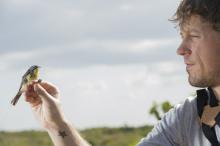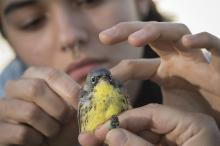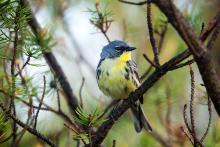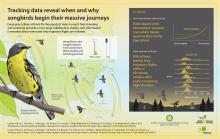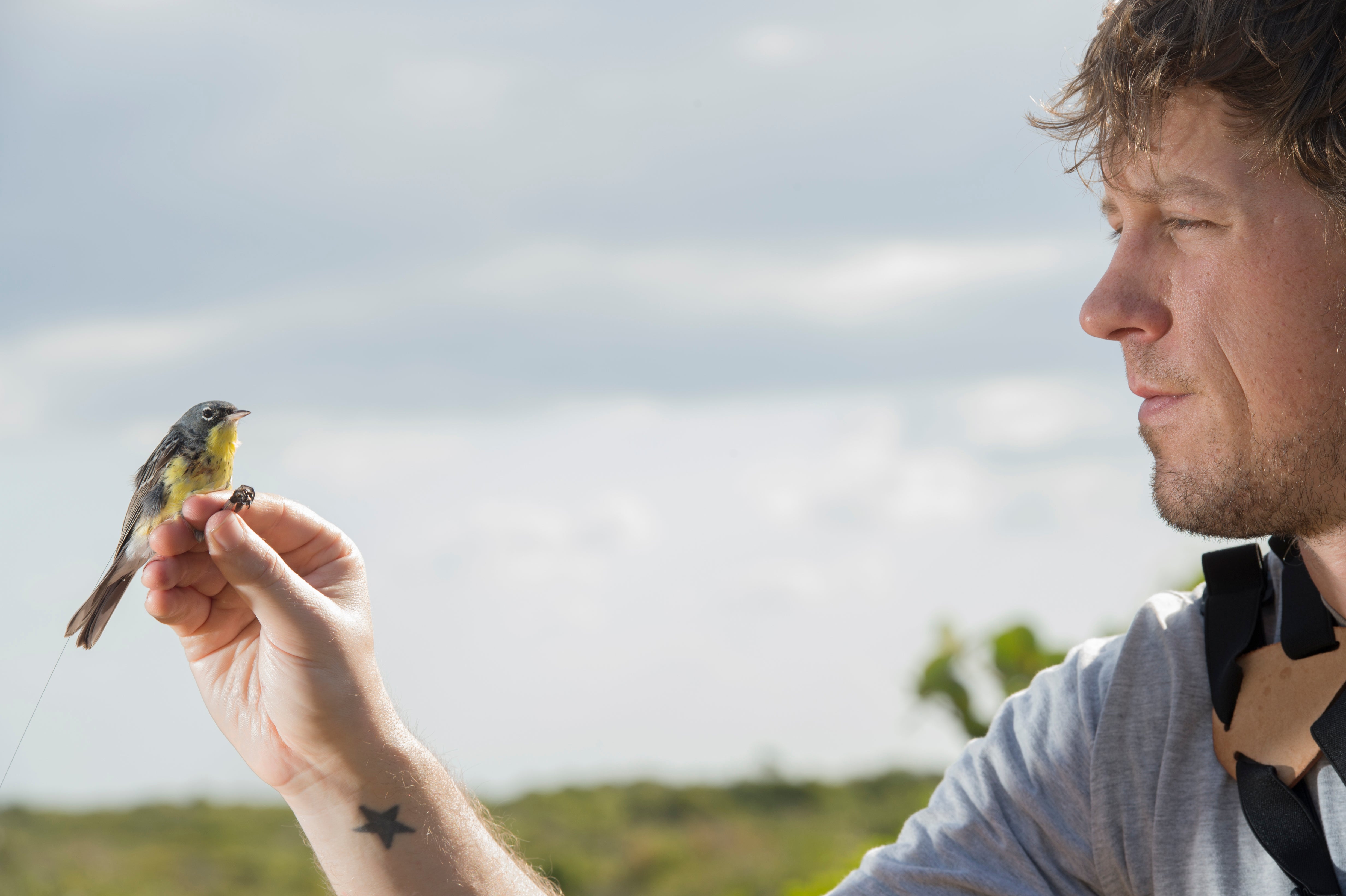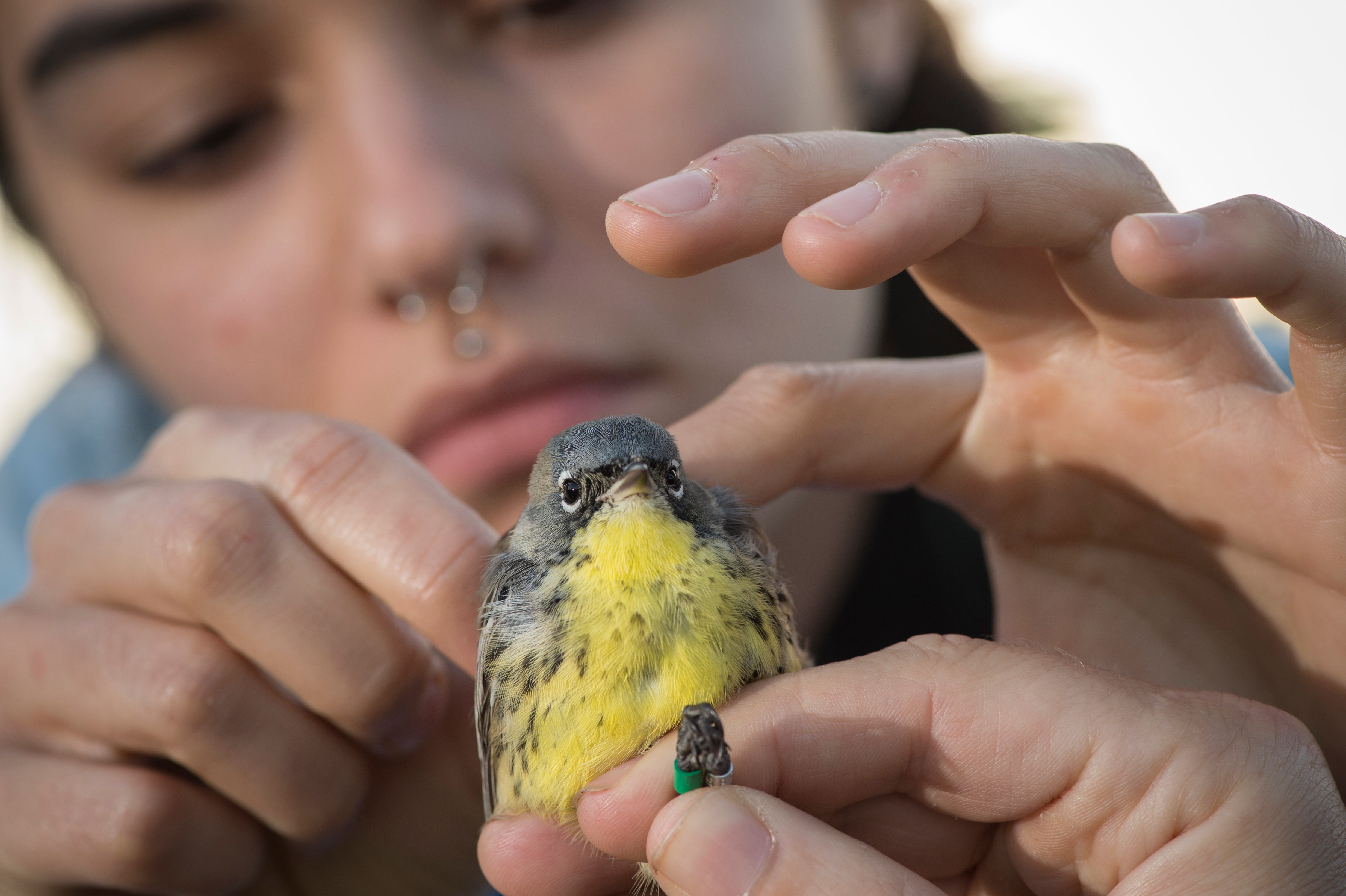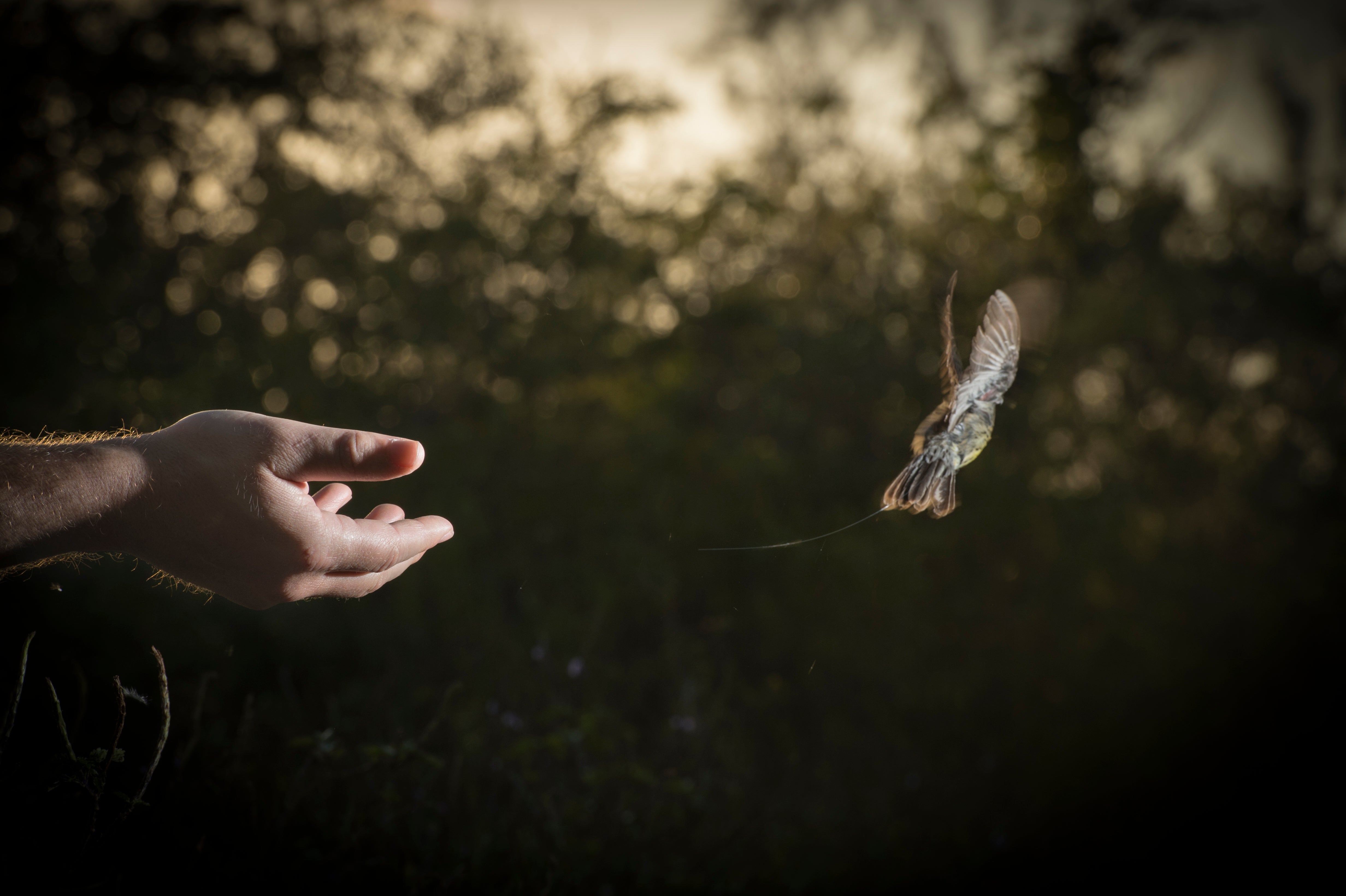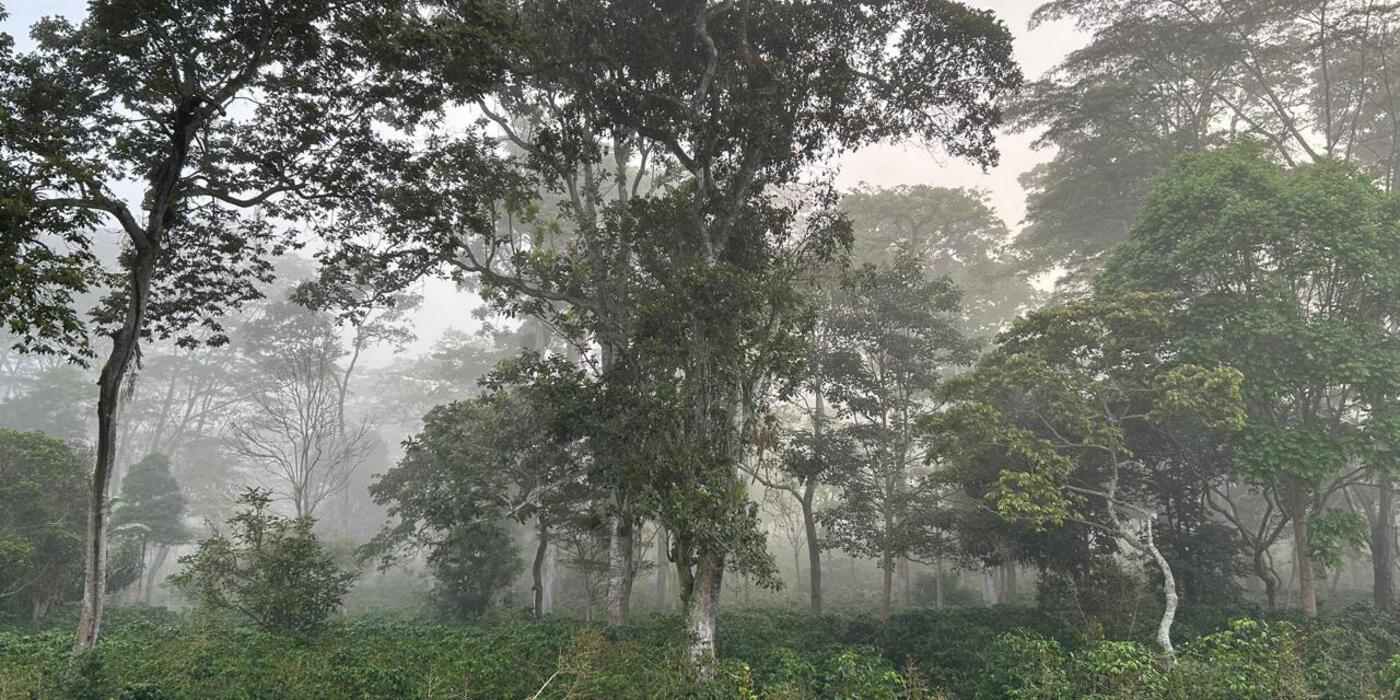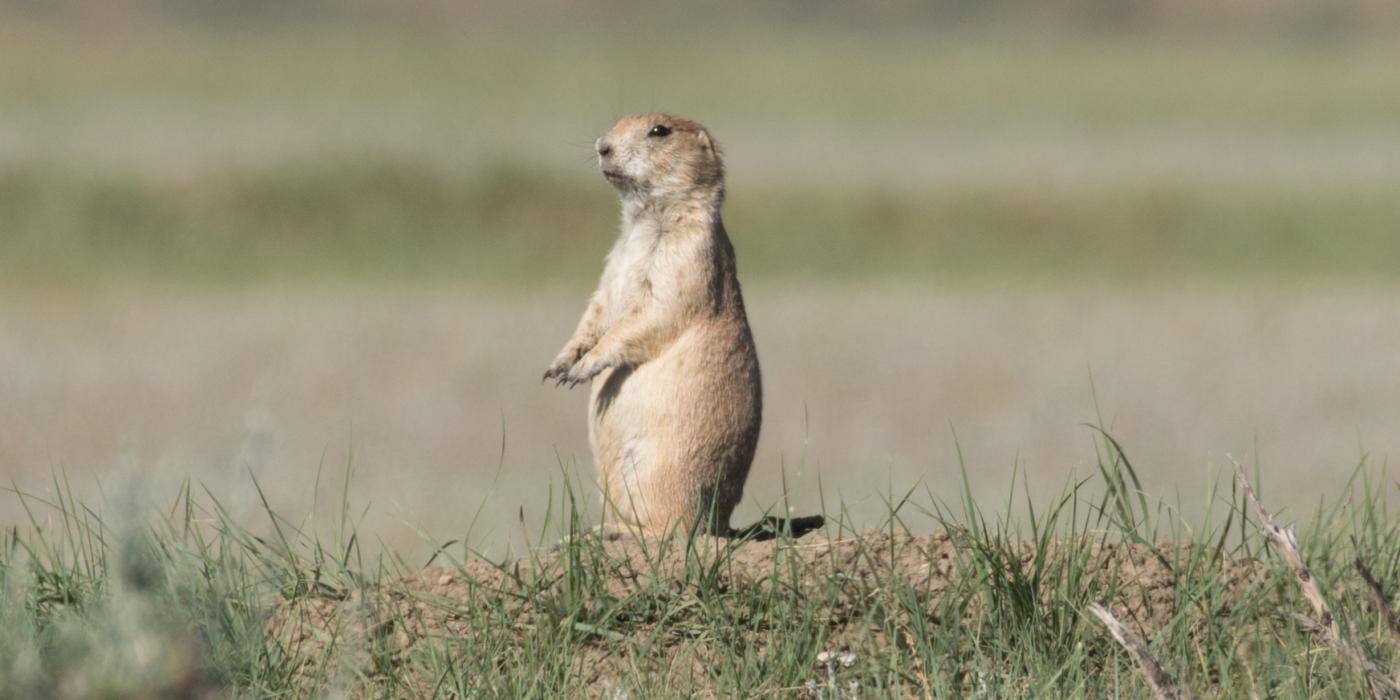Night Flight: Tracking Data Reveal When and Why Songbirds Begin Their Massive Journeys and How They Decide to Leave
Most Birds Start Within a 69-Minute Window Just After Dusk
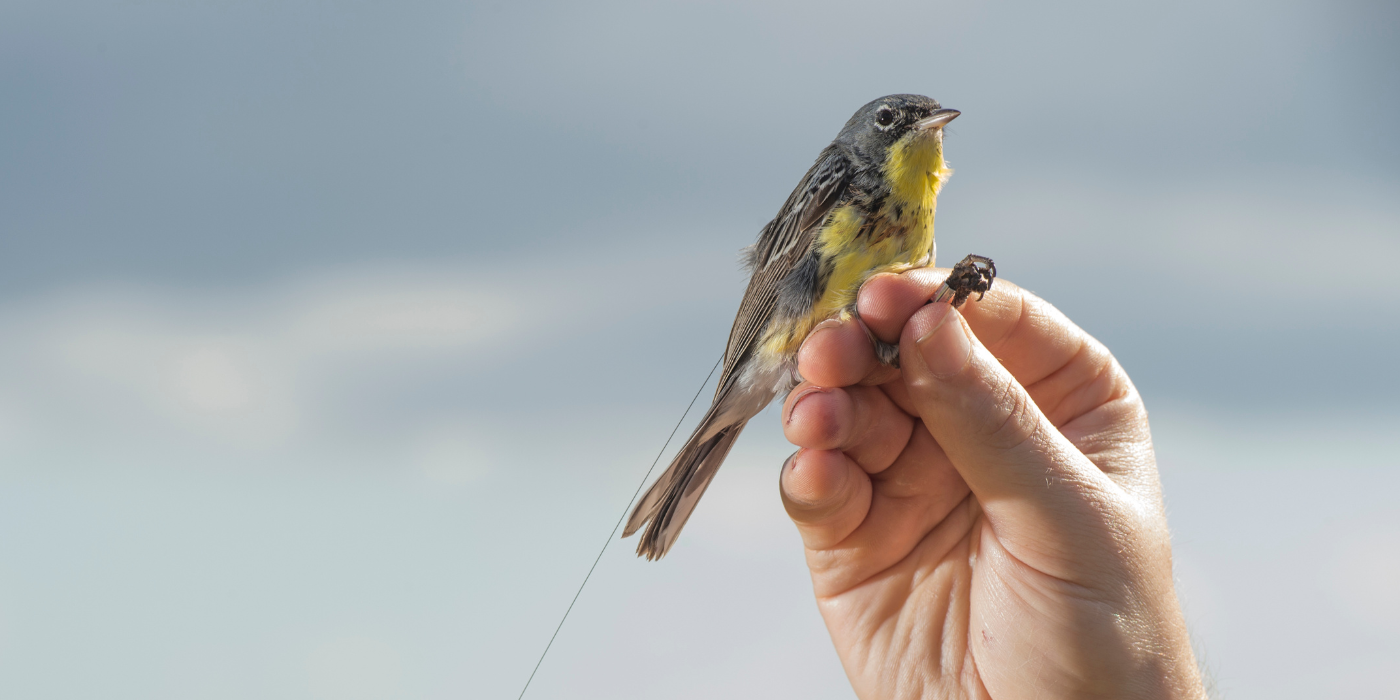
Every spring and fall billions of birds fly thousands of miles to reach their breeding and wintering grounds, yet some of the most basic details of these astonishing avian pilgrimages remain murky. In two studies published today in Movement Ecology, Nathan Cooper, research ecologist for the Smithsonian’s National Zoo and Conservation Biology Institute, and co-authors reveal new information about when migratory songbirds begin their long-distance journeys.
“These two findings significantly advance our knowledge of the decision-making process that songbirds use at the beginning of migration,” Cooper said. “We now know these feathered travelers begin their long-distance journey during the darkest stages of twilight and, just like mini-meteorologists, songbirds track atmospheric pressure to ensure safe and efficient flights.”
Using a huge tracking dataset spanning nine species from across North America, Cooper and co-authors report 90% of birds beginning migration started their migratory flights within just a 69-minute window after dusk. The second paper, also in Movement Ecology, finds birds use changes in atmospheric pressure to pick which day to take to the skies. Individual birds were most likely to depart on nights when atmospheric pressure had been rising over the past 24 hours—typically a sign of fair weather over the next several days.
Scientists have long known that most birds make their migratory flights at night. The darkness gives them access to celestial cues that aid in navigation, and cooler temperatures guard against overheating and provide protection from daytime predators. Based on this preference for night flight, researchers have predicted for decades that a departure time shortly after sunset would make the most sense because it maximizes flight time in darkness.
Despite these theoretical predictions, actual studies of wild birds failed to produce the expected pattern. A key distinction between these two new studies from those of the past is Cooper and his co-authors tracked birds as they first departed their overwintering and breeding sites each year, and by tracking birds over the following days, they were able to use these data to tease apart which birds were departing on shorter trips and which ones were beginning their migration in earnest. By filtering out these minor excursions, the team was able to reveal the much narrower preferred takeoff window for major migrations. Cooper said the likely explanation is that shorter trips are less demanding and thus allow a wider diversity of departure times.
Researchers have also previously demonstrated in the lab that birds are capable of detecting changes in atmospheric pressure, and while studies have not been totally conclusive, there is evidence suggesting birds perceive these pressure changes with a structure inside their middle ear called the paratympanic organ. However, it was unclear how birds prioritize this information in the wild when making decisions about when to depart on a lengthy migration.
Cooper was able to fill in this songbird migration knowledge gap with tracking data from a Kirtland’s warbler study that showed something striking during the four- to six-week departure period for the birds’ spring migration.
“It wasn’t just a steady stream of birds leaving every day, it was big pulses of birds leaving on just a handful of days,” Cooper said. “There must be something special about these particular days for so many to leave at once. I was really curious to learn more.”
To get at these questions, these two studies brought together datasets from multiple research programs that used radio tracking devices and a network of automated telemetry stations operated by the Motus Wildlife Tracking System to monitor the movements of nine species of songbirds, including Kirtland’s warbler, Swainson’s thrush and the American Redstart at breeding sites in Michigan, Alaska, Quebec and Nova Scotia and overwintering sites in Jamaica and the Bahamas. All told, the tracking data covered nearly 400 individual birds from 2014 to 2019.
Armed with this wealth of tracking data, researchers were able to determine the exact date and time that birds were departing on their migratory flights.
To see what time of day birds were starting their migrations, the team filtered out the departures of birds leaving on short flights. This revealed, almost regardless of species, 90% of the birds in the study began their first migratory flight within a 69-minute window following dusk at various points during the four- to six-week departure seasons.
“This is a really tight window, which suggests there is something important about this time of night,” Cooper said. “And we argue, this consistent departure time early in the night is about maximizing night flight time.”
The other advantages of flying at night—such as the availability of celestial cues for navigation or reduced threat from predators—do not necessitate leaving during a short window after sunset, Cooper said. Taking to the wing just after dusk ensures the birds can pack in the most mileage under the cover of darkness.
To assess the importance of various weather variables in a bird’s decision to begin migration, Cooper and his co-authors cross-referenced the departure dates for four of the tracked bird species with hourly weather data from a global weather model. The team then analyzed how favorable wind direction, atmospheric pressure, precipitation and cloud cover affected the probability of departure from breeding and wintering sites for birds in the study.
Cooper and colleagues found that birds of all four species were more likely to depart breeding and wintering sites when pressure had risen over the past 24 hours. Meteorologists generally consider rising atmospheric pressure to be a predictor of fair weather for several days. By contrast, favorable wind direction, precipitation and cloud cover were each only informative predictors of departure in a single species.
“These birds are using their ability to sense changes in atmospheric pressure to predict the next few days of weather with some accuracy to help them decide if it’s a good day to begin their migration,” Cooper said. “But we also know that weather only comes into the equation after the broader window for departure has already been set by other factors.”
Those other factors that set the departure window, Cooper said, include genetically based responses to seasonal changes in the number of daylight hours and how quickly the birds can build up their fat reserves, which is dependent on age, sex, food availability and habitat quality.
Migration is the most dangerous time of year for most of these species and prior research shows bird populations in the U.S. and Canada have declined by 29%, or almost 3 billion birds, signaling a widespread ecological crisis. Improving the understanding of how birds decide when to migrate can only help efforts to conserve and protect them as climate change alters weather patterns and light pollution overwhelms the celestial cues, like stars, that birds use to navigate.
The full list of authors on the papers include Nathan Cooper (1), Bryant C. Dossman (2,3), Lucas E. Berrigan (4,5), Morgan Brown (4,6), Alicia R. Brunner (3,7), Helen E. Chmura (8), Dominic A. Cormier (4), Camille Bégin-Marchand (9), Amanda D. Rodewald (3), Philip D. Taylor (4), Christopher M. Tonra (7), Junior A. Tremblay (9) and Peter P. Marra (2).
- Smithsonian’s National Zoo and Conservation Biology Institute, United States
- Georgetown University, United States
- Cornell University, United States
- Acadia University, Canada
- Motus Wildlife Tracking System, Birds Canada, Canada
- University of Amsterdam, The Netherlands
- The Ohio State University, United States
- Rocky Mountain Research Station, USDA Forest Service, United States
- Wildlife Research Division, Environment and Climate Change Canada, Canada
About the Smithsonian’s National Zoo and Conservation Biology Institute
The Smithsonian’s National Zoo and Conservation Biology Institute (NZCBI) leads the Smithsonian’s global effort to save species, better understand ecosystems and train future generations of conservationists. Its two campuses are home to more than 2,100 animals, including some of the world’s most critically endangered species. Always free of charge, the Zoo’s 163-acre park in the heart of Washington, D.C., features 2,100 animals representing 400 species and is a popular destination for children and families. At the Conservation Biology Institute’s 3,200-acre campus in Virginia, breeding and veterinary research on 250 animals representing 20 species provide critical data for the management of animals in human care and valuable insights for conservation of wild populations. NZCBI’s 305 staff and scientists work in Washington, D.C., Virginia and with partners at field sites across the United States and in more than 30 countries to save wildlife, collaborate with communities and conserve native habitats. NZCBI is a long-standing accredited member of the Association of Zoos and Aquariums.
Image Gallery
